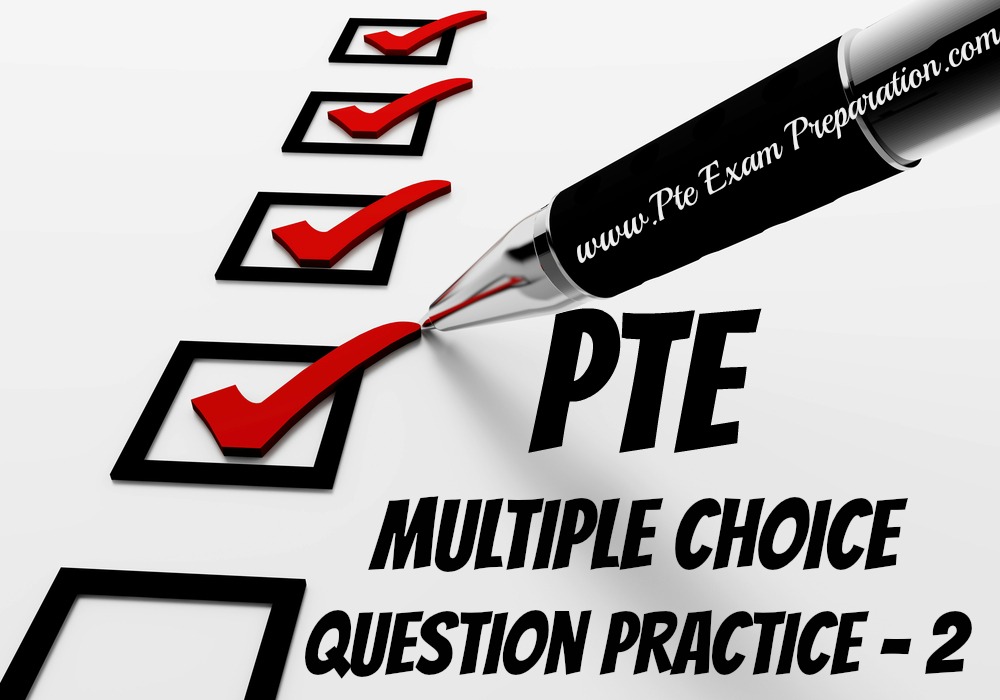PTE Academic Reading Sample Practice Test 2 Multiple Choice Multiple Answers
PTE Reading Multiple-choice, Choose Multiple Answer – Read the passage and answer the question by choosing multiple answers. This type of questions requires test takers to read, analyse, understand and assess text on an academic subject. Select multiple correct responses from all given options.
PTE Academic Reading Sample Practice Test 2 Multiple Choice Multiple Answers
PTE READING – MULTIPLE-CHOICE CHOOSE MULTIPLE ANSWER
3. Read the passage and answer the following question.
Indian conservationists are facing the problem of shrinking habitat for tigers. India has one of the world’s largest programs to protect the tiger. It is also not an easy task to save tigers and humans together. Persons who are living near tiger reserves faces more problems. Wildlife officials visit a village and saw a tiger was plowing near the village. Wildlife experts spent many hours persuading the villagers not to disturb the tigress because they think that frightened villagers would target the tigress. Actually, the female tiger was on a search for a mate. Field director of reserve formed teams to keep an eye on that tigress and ordered them to intervene immediately if she tried to attack someone. After spending four days, a male tiger answered her mating call and she returned back to the deep jungle. Later, she gave birth to two cubs, who are the newest additions to the 13 tigers in Sariska. This made the officials very happy. Conservationists say time have changed, even for human life in the forest, but neither the villagers nor wildlife gain from being close together. The government always wants to guarantee tribe for whom the forests have been always been home.
Ques – Which among the following statements are correct with respect to upper given passage?
[A]. India is home to half the world’s tigers and the government is trying to save Tigers.[B]. Major reason behind the decline in the tiger population is
[C]. What is the significance of tigers in India?
[D]. The struggle to balance the interest of wildlife and villagers is not likely to end anytime.
[E]. Tigers are in danger of extinction due to over-hunting by poachers.
[F]. The reducing number has triggered the government authorities to awaken and take observe. For Answers Click Here
D and F
4. Read the passage and answer the following question.
Consistent with the theory of the second-best, results of a policy shall be improved if the cost of carbon is only partially internalised by firms. This idea was an outcome of dynamic allocation updating organisation which clarifies to refund a portion of compliance cost to the firms. The investigation was done on trade-offs policy from an optimal taxation perspective. Considering all variants, an optimal level solution of carbon prizes came out along with the associated level of welfare profits. They also found that market-based policies can also deliver welfare gains if the compliance costs by firms fall substantially below the true social cost of emissions. For instance, the social cost of carbon is $45 per ton, then the optimal carbon tax should be only $5 per ton for trade-exposed coastal markets. Two distortions namely market power and incomplete regulation are affected by lower taxes.
Increasing the permit auctioning regime with the border tax adjustment would internalise the emissions externality associated with foreign production, but on the other hand, leaves with the distortions associated with the exercise of market power unaddressed. In coastal areas, it increases the optimal carbon price from $5 per ton to $25 per ton. At inland markets, it is higher than the optimal price because here market tends to be relatively more competitive.
Ques – Which among the following statements are correct with respect to upper given passage?
[A]. Losses are particularly acute under the permit auctioning regime in which firms bear the full cost of compliance.[B]. What are the constrained-optimal policies for market power in the product market and emissions leakages?
[C]. A border tax adjustment is the most cost-effective way to reduce emissions, especially when considering the negative effects of emissions leakage.
[D]. The optimal regulatory policy in such industries may be to rebate compliance costs partially on the basis of output or to impose border tax adjustments.
[E]. Which of the regimes performs best from a welfare point of view? For Answers Click Here
B and D
